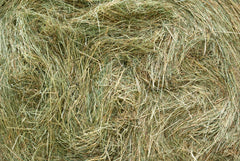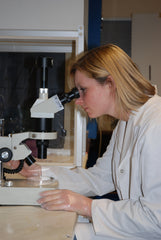An in depth look at forage
Written by Becky James BSc MSc
The nutrient content of fresh forage changes radically throughout the growing season, and such changes are reflected in forages conserved at different times of the year. Grazed forage alone can support the energy and protein requirements of all classes of horse for at least part of the year. Depending on the forage type and time of harvest, well conserved forages of moderate-high nutritive value may meet the energy and crude protein requirements of horses in moderate work and pregnant mares. As forages form the basis of all equine diets, and as their nutrient content is so highly variable, forages need to be analysed in order to incorporate them into specifically tailored rations.
Forages may be grazed in pastures or conserved and dried as hay or ensiled as silage/haylage for use at times when fresh forage is limited either due to lack of quantity or shortened time out at pasture.
Forages are high in dietary fibre which is largely derived from the plant cell wall. As forages mature from short-stemmed, leafy plants to long-stemmed plants with a decreased leaf: stem ratio there is a rise in cell wall lignin content to support the taller plant. Lignin is virtually un-degraded during digestion and so mature forages are less well utilised by horses than younger, leafy forages.

Conserved forages
Conserved forages will always have a lower nutritive value than the corresponding fresh forage for a number of reasons. These include loss of nutrients from respiration, microbial metabolism and differential loss of nutritional leaf material during the conservation process. Hay is the traditional means of conserving forage and is dried to more than 80% dry matter (DM). It can be classified into two categories, seed hay, which is generally composed of one or two specially sown grass species and meadow hay, which is a mixture of different grasses and other herbage in permanent pasture. It is usually dried in the field although some is dried in barns where fans reduce the field curing time. Hay is preserved by drying to a level which discourages microbial growth. However, ideal weather conditions for hay making are not always possible, especially in the UK resulting in hay not always being dry enough.
Haylage usually has a DM of 50-70% and is preserved through lactate fermentation, which lowers the pH to a level of 4.5 or less that prevents growth of undesirable micro-organisms via airtight wrapping.
Short fibre forage
Chopped oat straw and alfalfa chaffs are a useful way of feeding different types of fibre and allow the owner to feed a “bucket feed”. However, they cannot replace the long stemmed hay or haylage part of the diet as it wouldn’t satisfy the horse’s need to chew and for some owners the cost of this may be too high.
Selecting forage
A basic practical assessment can be made initially but laboratory analysis is the only accurate way to assess forage samples for nutritional and hygiene quality.
Initial assessment:
- Visual assessment should include:
- The right shade of green colour
- Relative abundance of seed heads to help determine maturity
- Species composition
- Presence of noxious and toxic weeds
- Visible foreign bodies.
When assessing haylage the integrity of the wrap should be checked as aerobic spoilage will occur if it is punctured.
- Smell: it should appear fresh, often sweet-smelling. It should not smell musty. (Avoid in haling too deeply!)
- Scrunch the hay in your hands: if it’s hard and spiky this indicates mature, stemmy grass. Softer hay usually indicates a younger grass although texture does vary between species. Assess the leaf: stem ratio. If you want an energy dense forage then you want high leaf: stem ratio, if your horse requires lower energy levels then a courser, more mature hay with high stem: leaf ratio.


Laboratory analysis
Forage samples should ideally be taken using a hay bore diagonally through the bale, which extracts a sample. Several samples are taken from many bales to give a representative sample of a batch of forage, haylage bales must be immediately re-sealed. If a hay bore is not available, simply grab samples from different areas of different bales to give an estimate of forage analysis. In order to obtain a representative sample it is best to sample from several bales if possible, after which thoroughly mix the samples and sub-sample to achieve a final sample sufficient to fill an A4 sized bag.
Forage analytical laboratories commonly determine the content of crude protein, ash, various fibre fractions, fats, water soluble carbohydrates and some minerals and vitamins. The forage digestible energy (DE) can then be estimated from these constituents. The use of near infra-red spectroscopy (NIRS) has revolutionised forage nutritive content analysis compared to wet chemistry and results can be turned around quickly. Microbial analysis may be performed for identifying pathogens or spoilage microorganisms. The presence of respiratory or other allergens can also be evaluated, as all hays carry respirable particles.
Steaming the hay or haylage in a Haygain will reduce 99% of the respirable particles, bacteria and mould from any forage.
We recommend sending your forage to be tested by a licenced laboratory to determine the nutritional value so an individual diet can be tailored from there. As an example, table 1 below shows the range of nutrient levels of different hays in the UK from a late cut mature meadow hay (very low/low) to an early cut young leafy ryegrass hay (high/very high).



















